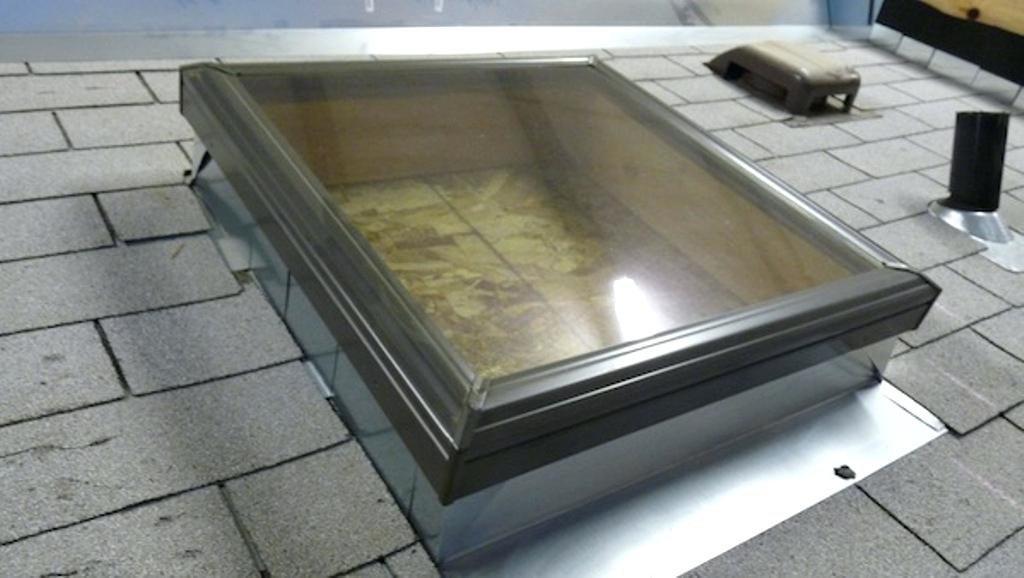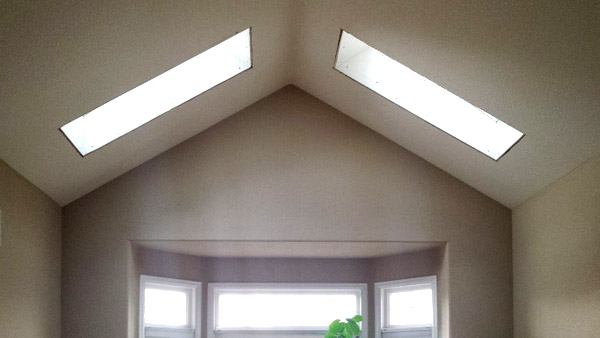 CALL OR EMAIL US TODAY FOR YOUR FREE ESTIMATE – 202-276-5004 FAMILY.ROOFING@YAHOO.COM
CALL OR EMAIL US TODAY FOR YOUR FREE ESTIMATE – 202-276-5004 FAMILY.ROOFING@YAHOO.COM
At Family Roofing, we take great pride in our experience, expertise, quality and customer service. It is our mission to provide excellent workmanship and complete customer satisfaction from start to completion of a project. Our reputation is based on service, safety and quality, regardless of how large or small the job.
Pros and Cons of Skylights
 There are many advantages to skylights in general. They can make small rooms appear larger, make dark rooms brighter and ventilate humid rooms. Roof skylights can also contribute to architectural and stylistic statements. A skylight can help hugely in improving energy efficiency, illuminating low-light areas, and also provide the much-needed dimension to a living space. In addition to that, all that extra lighting dropping in from the skylight can help in cutting down the lighting costs, and the amount of heat it allows in can have a substantial impact on your energy bills.
There are many advantages to skylights in general. They can make small rooms appear larger, make dark rooms brighter and ventilate humid rooms. Roof skylights can also contribute to architectural and stylistic statements. A skylight can help hugely in improving energy efficiency, illuminating low-light areas, and also provide the much-needed dimension to a living space. In addition to that, all that extra lighting dropping in from the skylight can help in cutting down the lighting costs, and the amount of heat it allows in can have a substantial impact on your energy bills.
Building structures that utilize skylights, in combination with vertical windows, tend to be more energy efficient. Skylights help in making a major contribution to energy efficiency and comfort, it can admit more than three times as much light as a vertical window of the same size and distributes the same evenly resulting in savings in energy and improving the overall visual comfort levels of the occupants. The scarcity of land has made the space for proper ventilation and lighting restricted. Apart from that, sometimes, homeowners consider safety reasons and choose to have fewer window openings in the walls. In such conditions fixing skylight in the roofs is the best solution as skylights bring natural light and air into areas that normally wouldn’t have windows.
Skylights also increase the convenience of internal spaces which otherwise are dependent on supplementary artificial ventilation or lighting. They permit added flexibility in the architectural design. Also, even under grey conditions, the use of skylights ensures that the spaces are mostly lit by natural light, with very little or no extra artificial lighting
Yet, skylights can also cause a homeowner some grief. Lower-quality skylights can cause ultraviolet (UV) damage on furniture and flooring, or can create glare. All roof skylights will allow for some heat loss, as they penetrate the roof deck. In fact, skylights will release more conditioned air than even a window of the same size would. Even a properly installed skylight may sometimes lead to condensation or a leak. But there are many ways to avoid these problems, including choosing the skylight that is right for your home and making sure it is properly installed.
Skylights can be of many different types depending upon the materials used, its type of use, and the types of roof/room. The most commonly used ones are discussed below.
1. Fixed Skylight
One of the most popular types of skylight is the fixed skylights. Just like their name indicates, these are fixed and do not open for air ventilation, basically, they are totally sealed to the roof. This type of skylight is used at low lit areas like the attics and the stairwell. Around 90 percent of the materials used in the fixed skylight is glass and the frame are made of steel, or aluminum, or timber. These are typical skylight windows that do not open. They provide light and can provide a beautiful view of the sky or other scenery. Fixed skylights are generally installed on a high ceiling where you can’t reach them. Because they don’t open, they don’t provide humidity control for a room.
2. Ventilated Skylight
 In the pool of different types of skylight, this one serves multi-purposes. Ventilated skylight works as a source of ventilation of air and light. These are perfect for kitchen and bathrooms, as they also aid in removing excess moisture and keep a constant flow of fresh air in the living area. In addition to that, it also illuminates the place. Basically, a ventilated skylight is an addition of a new window onto the roof of your house. Vented skylights look the same as fixed skylights, but they can be opened by hand or by electronic control. Therefore, vented skylights are a good choice where condensation or excess humidity is a concern. For example, they can provide moisture control in key rooms, like bathrooms and kitchens. They may also double as emergency exits if they are easy to access and made to building codes. But vented skylights tend to be more expensive than fixed skylights.
In the pool of different types of skylight, this one serves multi-purposes. Ventilated skylight works as a source of ventilation of air and light. These are perfect for kitchen and bathrooms, as they also aid in removing excess moisture and keep a constant flow of fresh air in the living area. In addition to that, it also illuminates the place. Basically, a ventilated skylight is an addition of a new window onto the roof of your house. Vented skylights look the same as fixed skylights, but they can be opened by hand or by electronic control. Therefore, vented skylights are a good choice where condensation or excess humidity is a concern. For example, they can provide moisture control in key rooms, like bathrooms and kitchens. They may also double as emergency exits if they are easy to access and made to building codes. But vented skylights tend to be more expensive than fixed skylights.
3. Tubular Skylight
Tubular skylights are an effective product to provide natural light to both residential and commercial indoor spaces. This type of skylight consists of 3 main components:
-
A roof-mounted light collector – mounted on the roof and typically consists of a parabolic lens which allows for light collection throughout the day. These lenses are set into a frame.
-
A highly-reflective tube – The light collected is reflected through the tube to the interior fixture with diffuser lens.
-
An interior fixture – Occasionally this interior fixture can also be supplied with a combined electrical light as a backup for cloudy days or night-time.
These are perfect option when the roof space required for fixed or ventilated skylight is not available or scarce.
Tubular skylights, also called solar skylights, are not traditional skylight windows. Instead, they are long tubes meant to catch and reflect light into the home. Therefore, they are good for small spaces, like bathrooms, hallways and closets. It’s also easier to install solar skylights, especially where the attic or roof is obscured by wiring or venting, because they will fit between obstructions.
Solar skylights may have dimmers to control how much light they provide. They may have exhaust fans to help with moisture control, too. They can have a filter to keep UV light out. Tube skylights are a good choice where privacy is a top priority. Yet, they don’t provide a view outside, unlike skylight windows.

8. Curb-Mounted Skylights
These skylights have proven to be one of the most popular styles of skylights available in the market. They are relatively affordable and go really well in any type of room setting. Curbs are either built on-site or can be provided by the skylight manufacturer. In both cases, a curb needs to be double-walled and insulated to help retain heat in the home. These are a greater choice to avoid leaks. In addition to that these allow for more flexibility in size. Curb mounted skylights are the simplest of all skylight designs, these provide a refreshing environment without adding much stress to a building’s structure.
Deck-Mounted Versus Curb-Mounted Skylights
While these two skylight installation methods might sound bland, they make a big impact on your finished skylight. Essentially, the difference between a curb-mounted and deck-mounted skylight is that a deck-mounted skylight sits flush with the roof, while a curb-mounted skylight is held up higher than the roof face by a curb.
A deck mounted skylight’s frame is flashed directly into the roof. Skylight frames are made of extruded aluminum or galvanized steel, which must be connected to the rest of the roof by a roofing professional. It takes skill and knowledge to ensure that a deck-mounted skylight works with a roof instead of against it, so always be sure to consult with a roofing professional.
What is it that you expect the skylight to do for you? Basically, its function, i.e. bring in aesthetic value or bring in more natural light?
1. Positioning
Natural light is a huge benefit to any home, but overexposure isn’t good. You may have to look out for overexposure to UV in the home. The positioning of your skylight will affect a few factors, size of the skylight and numbers of skylight are few examples.
2. Size + Shape Of The Room
Sometimes, the size and shape of the room can affect your choice of a skylight. An obscurely shared room and roof, for example, might demand multiple bends in the tubing to achieve optimal performance of the skylight.
3. Operability
All types of skylight fall into two main categories – fixed and vented. True to its name, fixed skylights are non-operable and planned only for the purpose of providing extra light. On the other hand, a vented skylight can be opened, either manually or via remote, reliant on the type of skylight unit.
In addition to the basics, remote-operable vented skylights can cost you few extra bucks as compared to its manual. Also, because these involve a greater number of more parts, they are more vulnerable to problems. Your choice will need to consider the function, positioning and cost factor.
With such a great range of skylight options, we know that picking the right skylight can be problematic. Knowing what style, type, or even where to put a skylight in your home can be puzzling. With these tips choosing a skylight will surely be much easier!
Conclusion
Humans, like plants, thrive under natural daylight. Our body is designed to operate in line with the sun’s natural daylight schedule. Skylights can make a noteworthy contribution to energy efficiency and comfort in any building by providing natural light.

